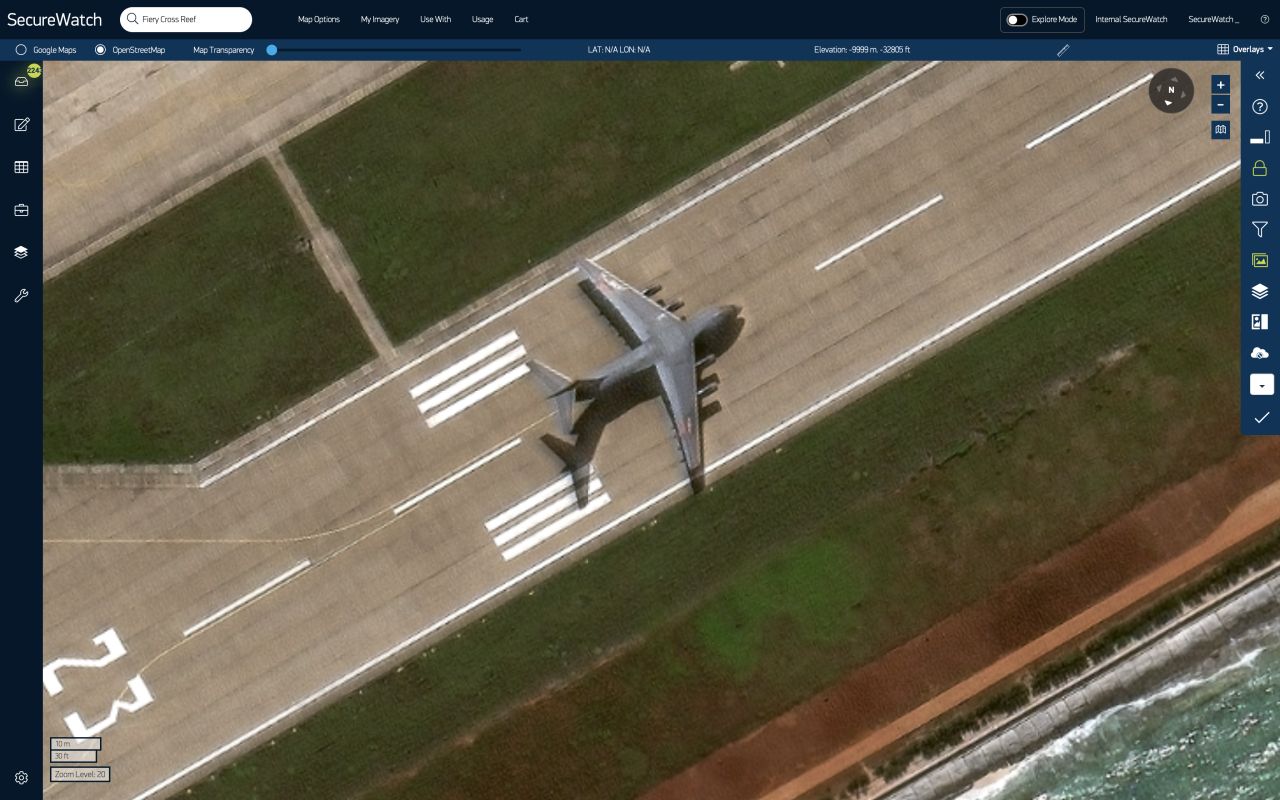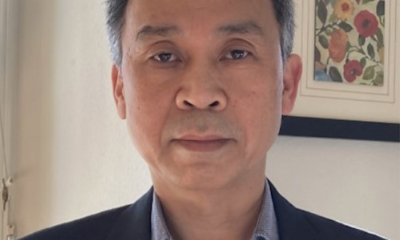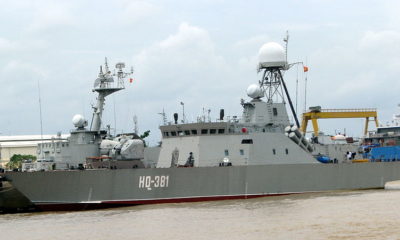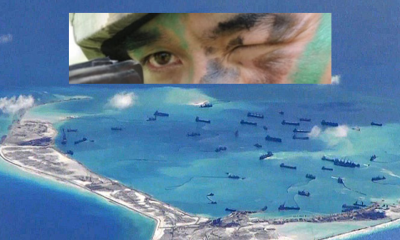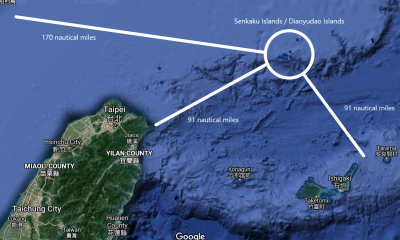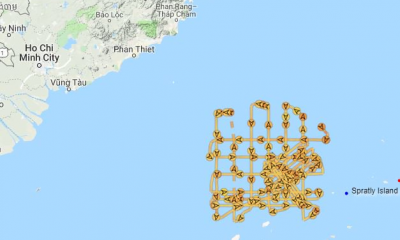Satellite images showed the Y-20 on the airstrip at Fiery Cross Reef. Photo: East Pendulum. Source: Maxar Technologies
Nguyen Luong Hai Khoi
On December 25, 2020, China landed a Y-20 transport plane on Fiery Cross Reef marking yet another escalation in China’s South China Sea dispute (See: South China Morning Post, “South China Sea: Why did the PLA land its massive Y-20 warplane on Fiery Cross Reef?“, January 1, 2021). Y-20 is a large transport aircraft that is capable of carrying missiles and heavy artillery. This shows that the Chinese construction of artificial islands and large military airports has changed the South China Sea landscape strategically.
These types of action taken by China began four years ago after the PCA’s award denies China’s legal bases for its claims in the South China Sea.
China sent warplanes to the South China Sea after the PCA’s award on July 12, 2016. Colonel Shen Jinke, the Chinese Air Force spokesperson, announced in Beijing on July 18, 2016, that the Chinese Air Force has recently made a combat cruise in the South China Sea. The spokesperson also stated that “Nanhai Zhudao” 南海诸岛 (“islands on the South China Sea”) “has been Chinese territory since ancient times, and China’s sovereignty in the South China Sea cannot be violated.” (See Xinhua News Agency: “Chinese Air Force warplanes go to the South China Sea for normalized combat cruise” 中国空军航空兵赴南海常态化战斗巡航, July 18, 2016)
The air force dispatch over the South China Sea marked a new Chinese escalation in 2016. However, this should be no surprise after witnessing the construction of a vast military airport on artificial islands in the South China Sea. A Chinese military Y-20 warplane landed at Fiery Cross Reef on December 25, 2020 is just another inevitable escalation.
Senkaku island in the East China Sea is 91 nautical miles from the baseline based on the Okinawa Islands and more than 170 nautical miles from the baseline based on the mainland China coast, which is less than a quarter of the distance from Hainan Island to Spratlys in the South China Sea. Therefore, it is natural for China to first adopt the air force’s tactics on Senkaku in the East China Sea.
According to the Japanese Ministry of Defense, to deal with the Chinese warplanes entering the Senkaku region and other airspaces, Japan urgently dispatched fighter jets to take off 464 times in 2014 and 571 times in 2015. (See Japanese Ministry of Defense: “On the deployment of emergency flights to deal with airspace intrusion in 2018”. Japanese: 2018年度の緊急発進実施状況について).
However, after the 2016 PCA’s award that denied China’s claims in the South China Sea, China dispatched air force into the South China Sea for the first time and intensified the intrusions into the Senkaku region and the surrounding airspace of Japan. According to the Japanese Ministry of Defense, to deal with China’s airspace intrusions, Japan had to urgently dispatch its fighter aircraft 851 times in 2016 (an increase of about 40% compared to 2015 and nearly double that of 2014), 500 times in 2017, 638 times in 2018, 675 times in 2019 and 234 times in the first half of 2020. (See Japanese Ministry of Defense: “On the deployment of emergency flights to deal with the intrusion of airspace in 2020”. Japanese: 2020年度の緊急発進実施状況について).
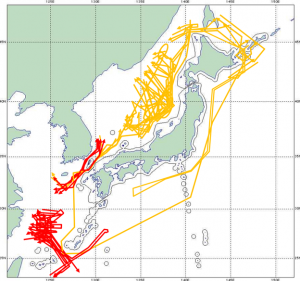
Examples of flight patterns of Chinese aircraft trespassing Japanese airspace. The red line is the Chinese flight pattern. (The yellow line is Russian patterns of trespassing flight) (Source: Japanese Ministry of Defense)
In short, China has always played many steps ahead in the chessboard that is the South China Sea in order to ensure that it always has the upper hand. Since 2013, when the Philippines started to file a lawsuit against China at the Permanent Court of Arbitration, China started to build artificial islands and military bases in the South China Sea. Since July 2016, after the Permanent Court of Arbitration’s ruling rejected the legal basis of China’s sovereignty claim over the U-shaped lines in the South China Sea, China had already completed the construction of many artificial islands, airbases, and Navy bases in the Spratlys. This had allowed China to step up air forces operations in the South China Sea to assert sovereignty. China’s strategy over the South China Sea has been successful.
In the East China Sea, the Chinese air force entered the Senkaku area early before entering the South China Sea’s Spratly. However, when it was clear that Spratly strategy in the South China Sea was successful, China has suddenly intensified the deployment of warplanes to intrude on Senkaku’s area since 2016. Japan was quick to identify and understand China’s moves and strategy. The second power in Asia has enough power to prevent China from turning the East China Sea into a “second South China Sea.”

 Politics & Economy4 years ago
Politics & Economy4 years ago
 Politics & Economy1 year ago
Politics & Economy1 year ago
 ARCHIVES5 years ago
ARCHIVES5 years ago
 Society & Culture5 years ago
Society & Culture5 years ago
 After 19751 year ago
After 19751 year ago
 Politics & Economy4 years ago
Politics & Economy4 years ago
 Politics & Economy5 years ago
Politics & Economy5 years ago
 Politics & Economy4 years ago
Politics & Economy4 years ago
